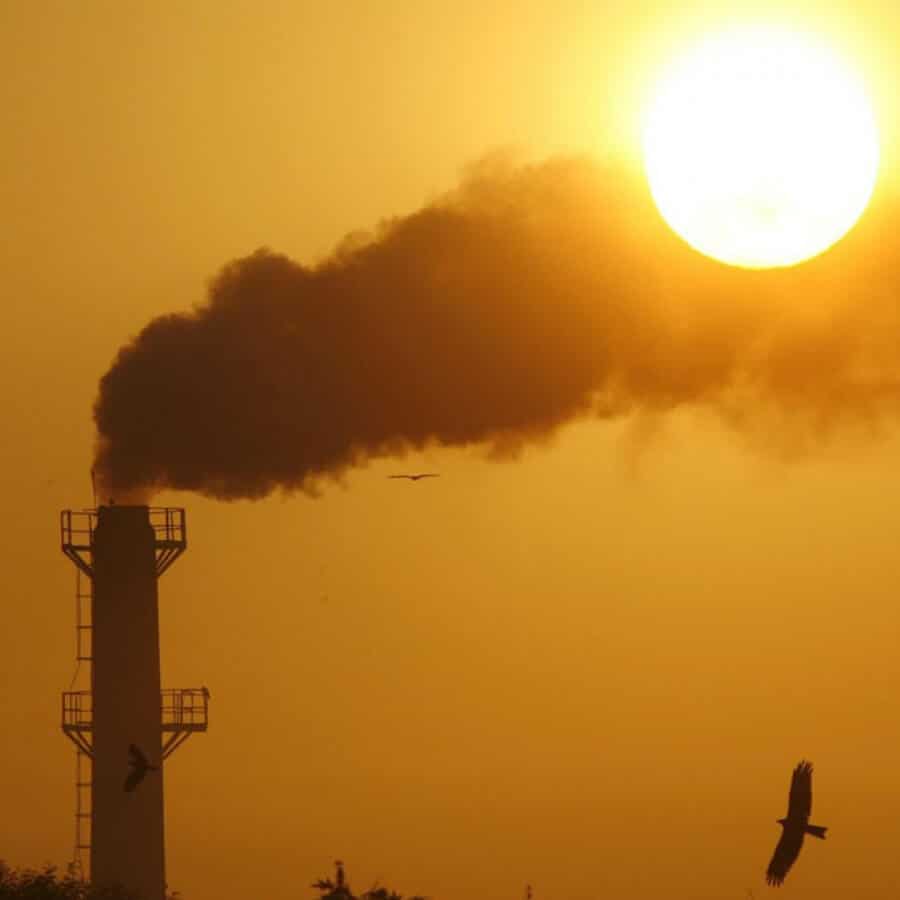The World Health Organization (WHO) has released a new interactive map that shows country estimates on air pollution exposure and health impacts. This latest map shows all danger spots, and we learn from it that 92% of the world’s population lives in places where air quality levels exceed WHO limits. This interactive map is based partly on collaboration with the UK’s University of Bath, and it is the most detailed presentation made available up to this date.
Approximately 3 million deaths a year are linked to exposure to air pollution, and an alarming fact is that 1 in 9 of total global deaths is a consequence of indoor or outdoor air pollution. Ninety percent of air pollution deaths occur in low or middle-income countries. People affected by this problem are experiencing cardiovascular diseases, stroke, chronic obstructive pulmonary disease, and lung cancer. There is also an increased risk of acute respiratory infections.
Sources of air pollution vary, from household fuels, transportation vehicles, coal-fired power plants, industry, and dust storms, to pollutants such as sulfate, nitrates, and black carbon, which penetrate deep into the lungs and into the cardiovascular system, posing the greatest risks to human health. Africa, China, India, the Middle East, and Eastern Europe are among the worst affected regions in the world. More carbon dioxide has been pumped into the atmosphere in the past 150 years than was introduced into it over the hundreds of thousands of years that preceded the Industrial Revolution.
Some of the consequences of air pollution are: global warming, the greenhouse effect, acid rain, smog, and ozone holes. Global warming is a consequence of a constant increase in the average temperature of the Earth as a consequence of the greenhouse effect. The sun emits energy in varying wave lengths, a great portion of which reaches the Earth’s surface. The Earth absorbs a part of that radiation and the other part is emitted back to space. The consequences are meteorological changes, windstorms, drought, declining crop yields, floods due to the melting of the snow and ice in the mountains and at the poles, a rising sea level, and the sinking of the coastal cities.
A derivative of smoke and fog (smog) occurs in big cities during the fall and winter, due to lots of aero-pollutants in a small area. Photochemical smog is a condition that occurs when nitrogen oxides interact under the influence of sunlight to give a mixture of hundreds of hazardous chemicals.
The rapid industrial development of the past 200 years and the resulting use of fossil fuels have caused the frequent occurrence of acid rain. The first acid rain was observed in the 19th century in Manchester, England. Acid rain leaves numerous effects on aquatic ecosystems (mass mortality of fish), land and soil (loss of vegetation), forest and herbaceous vegetation (burned leaves, drying out of forests), health of human populations (contamination of drinking water, respiratory diseases and cancers), and buildings and monuments (corrosion, degradation, destruction).
The ozone holes are places in the stratosphere where the concentration of ozone is significantly reduced. In the past decade it has been established that the ozone layer is becoming thinner. Ozone reduction is greatest at the poles, particularly over Antarctica. The ozone layer can be renewed, but chances are it is to be destroyed more quickly. Damage to the ozone layer increases the intensity of the UV radiation which causes skin cancer, eye diseases, and the weakening of immune systems …
One of the Sustainable Development Goals for world leaders in 2015 was a reduction in the number of deaths and illnesses from air pollution by 2030. This autumn, the World Health Organization is starting BreatheLife, a global campaign to increase public awareness of air pollution as a great risk for global health and climate.
Industrialized countries are constantly working to reduce sulfur dioxide, smoke and smog. Measures such as limiting the emission of carbon dioxide and other greenhouse gases are taken. One well-known agreement between countries is called the Kyoto Protocol. The Kyoto Protocol is an international agreement linked to the United Nations Framework Convention on Climate Change, which commits its Parties (170 countries) by setting internationally binding emissions reduction targets. Another example is the decision to put higher taxes on gasoline, so companies will have greater incentives to conserve energy and pollute much less.
Support us!
All your donations will be used to pay the magazine’s journalists and to support the ongoing costs of maintaining the site.
Share this post
Interested in co-operating with us?
We are open to co-operation from writers and businesses alike. You can reach us on our email at [email protected]/[email protected] and we will get back to you as quick as we can.









